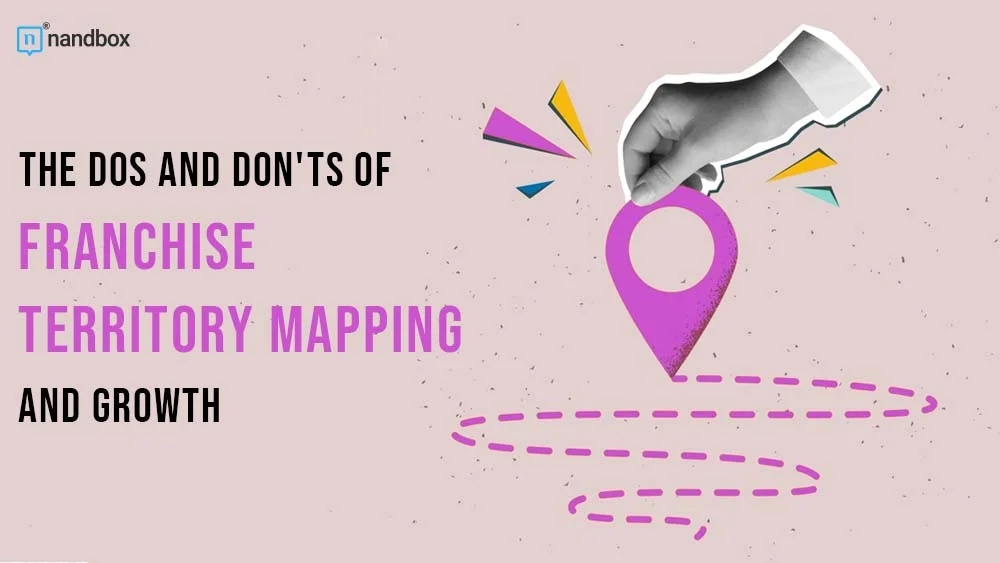Franchise territory mapping is a crucial aspect of successful franchise expansion. It’s all about dividing geographical areas into manageable chunks for franchisees to operate in. Get it right, and you’re setting the stage for growth. Get it wrong, and you might end up with unhappy franchisees and stunted business growth.
In this article, we’ll explore the dos and don’ts of franchise territory mapping and growth. We’ll cover the basics, share some smart strategies, and point out common pitfalls to avoid. Plus, we’ll touch on legal considerations and wrap up with some key takeaways to help you map your way to franchise success.
Key Takeaways
- Thorough market analysis is crucial for effective territory mapping.
- Regularly review and adjust territory boundaries as markets change.
- Balance franchisee exclusivity with system-wide growth potential.
- Stay compliant with legal regulations and maintain clear communication.
Understanding the Fundamentals of Franchise Territory Mapping
Let’s start with the basics. A franchise territory is like a slice of the business pie—it’s the area where a franchisee has the right to operate. When mapping these territories, you’ve got to consider a bunch of factors like population, local economy, and competition. Think of it as a balancing act. You want to give franchisees enough room to grow, but not so much that they can’t handle it. It’s about finding that sweet spot where both the franchisor and franchisee can thrive. For example, if you’re planning to start a Greek restaurant franchise, you might need to consider factors like local cuisine preferences and existing Mediterranean dining options when defining territories.
Data analysis plays a big role here. You can’t just eyeball a map and call it a day. You need to dig into the numbers, look at market trends, and understand what makes each area tick. It’s like being a detective, but instead of solving crimes, you’re solving business puzzles. This careful analysis is crucial for all franchises, no matter the industry. When looking at an overview of the top franchises in the USA, it’s clear that success is closely tied to understanding local markets, whether it’s a fitness brand or a home services company. Exploring the market, its needs, and trends is key to driving growth.
The Dos of Effective Territory Mapping
Now, let’s talk about what you should do to nail your territory mapping. First off, do your homework. Dive deep into market analysis before you even think about drawing lines on a map. Use fancy tools like GIS (Geographic Information Systems) to get a clear picture of each area.
Don’t forget to think long-term. A territory that looks great today might be a dud in five years, so factor in future growth potential. And hey, be fair about it. Clear, fair territory policies keep everyone happy and prevent headaches down the road. This is especially important for service-based concepts like a business broker franchise, where territories often overlap with local economic zones and business communities.
Keep in mind that territories aren’t set in stone. Be ready to review and adjust as needed. What worked last year might not work next year, so stay flexible. Also, be upfront with potential franchisees. Give them all the information they need about their territory. No surprises, please!
Common Pitfalls to Avoid
Don’t make the mistake of looking at just the big-picture data. Sure, demographics are important, but they don’t tell the whole story. You need to get into the nitty-gritty of each local market. Avoid the Goldilocks problem—territories that are too big or too small. Too big, and your franchisee might struggle to cover it all. Too small, and they might not have room to grow. It’s about finding that “just right” size.
Don’t ignore natural boundaries or local economic zones. A river or a major highway can make a big difference in how a territory functions. And watch out for cannibalization—you don’t want your franchisees competing with each other for the same customers. Make sure, too, that you spell out territory details in your franchise agreements. Leaving things vague is a recipe for trouble. And speaking of trouble, don’t let emotions cloud your judgment when making territory decisions. Stick to the facts and data.
Strategies for Sustainable Franchise Growth Through Smart Territory Planning
Think of territory expansion like a chess game—you need to plan several moves ahead. A phased approach can help you grow steadily without biting off more than you can chew. Mix it up with your territory types. A good blend of urban, suburban, and rural territories can give your franchise system some stability. And consider a hub-and-spoke model—it can be a great way to manage territories efficiently.
Don’t overlook the potential of multi-unit franchising. Some of your best franchisees might be ready to take on multiple territories. Set up development schedules and milestones to keep growth on track. And hey, technology is your friend here. Use it to keep an eye on how each territory is performing. This way, you can spot problems early and make tweaks as needed. Remember, smart growth is sustainable growth.
Navigating Legal and Ethical Considerations in Territory Mapping
Ultimately, don’t forget the importance of legal stuff. It might not be the most exciting part, but it’s super important. You need to understand the laws surrounding franchise territories, both at the federal and state levels. It’s like learning the rules of the road before you start driving. You don’t want to accidentally create a monopoly—that’s a big no-no. And be proactive about dealing with territorial encroachment. It’s better to prevent these issues than to try and fix them later.
Think about how you’ll handle territory transfers and resales. You want policies that are fair to everyone involved. It’s a balance between growing your system and protecting your franchisees. You may also want to be open and transparent about any changes to territories. Nobody likes surprises, especially when it comes to their business. By keeping everyone in the loop, you’ll build trust and avoid a lot of headaches.
Concluding Thoughts
Wrapping things up, effective franchise territory mapping is all about balance, flexibility, and smart planning. It’s not just about drawing lines on a map—it’s about creating growth opportunities. Remember to stay adaptable, keep communication open, and always look ahead. With these strategies in your toolkit, you’ll be well on your way to mapping out a successful franchise’s future.





